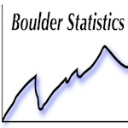- JMP will suspend normal business operations for our Winter Holiday beginning on Wednesday, Dec. 24, 2025, at 5:00 p.m. ET (2:00 p.m. ET for JMP Accounts Receivable).
Regular business hours will resume at 9:00 a.m. EST on Friday, Jan. 2, 2026. - We’re retiring the File Exchange at the end of this year. The JMP Marketplace is now your destination for add-ins and extensions.
- Subscribe to RSS Feed
- Mark Topic as New
- Mark Topic as Read
- Float this Topic for Current User
- Bookmark
- Subscribe
- Mute
- Printer Friendly Page
Discussions
Solve problems, and share tips and tricks with other JMP users.- JMP User Community
- :
- Discussions
- :
- Re: table of fold change P value and FDR for comparison of groups
- Mark as New
- Bookmark
- Subscribe
- Mute
- Subscribe to RSS Feed
- Get Direct Link
- Report Inappropriate Content
table of fold change P value and FDR for comparison of groups
I have datasets with many response variables (~15K) and many samples (~7K). I have clustered the samples based on prior knowledge into 10 clusters, and need to define the variables that are characteristic for each. I want to generate a table/matrix that lists all the variables vs the clusters, with the fold change (ratio) in mean response values (each cluster vs all other samples together) with P values (either corrected or not) and FDR if possible.
Hoping there is a simple way to generate this. ANOVA or negative binomial options would be helpful.
- Mark as New
- Bookmark
- Subscribe
- Mute
- Subscribe to RSS Feed
- Get Direct Link
- Report Inappropriate Content
Re: table of fold change P value and FDR for comparison of groups
I would suggest you look at the screening tools: Analyze > Screening > Response Screening. I often use the response screening platform for what I think you are trying to do. The documentaiton is at:
https://www.jmp.com/support/help/14/response-screening.shtml
- Mark as New
- Bookmark
- Subscribe
- Mute
- Subscribe to RSS Feed
- Get Direct Link
- Report Inappropriate Content
Re: table of fold change P value and FDR for comparison of groups
Response screening gives the difference in means. However for our purposes the difference in mean values is not as relevant as the difference in the ratios of each gropup mean to the whole.
Hence a table of fold change with P values and FDR is needed. I wonder if their are availble scripts that do this.
thanks
- Mark as New
- Bookmark
- Subscribe
- Mute
- Subscribe to RSS Feed
- Get Direct Link
- Report Inappropriate Content
Re: table of fold change P value and FDR for comparison of groups
My experience in such cases was in virology when the useful information was a doubling but the response was titer. So a transformation could make the response more meaningful transforming as Ln( titer ) / Ln( 2 ). (That is effectively the logarithm base 2.) You can do this transformation with a column formula without the need for a separate script.
Recommended Articles
- © 2026 JMP Statistical Discovery LLC. All Rights Reserved.
- Terms of Use
- Privacy Statement
- Contact Us

